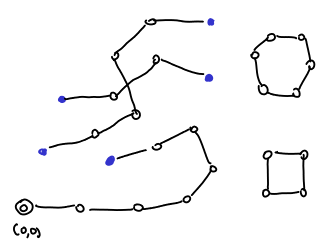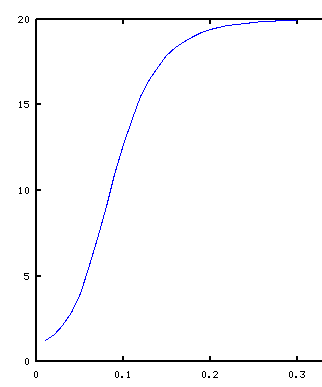MHR, Regular Distributions and Myerson’s Lemma
Monotone Hazard Rate (MHR) distributions and its superclass regular distributions keep appearing in the Mechanism Design literature and this is due to a very good reason: they are the class of distributions for which Myerson’s Optimal Auction is simple and natural. Let’s brief discuss some properties of those distributions. First, two definitions:
- Hazard rate of a distribution
:
- Myerson virtual value of a distribution
:
We can interpret the hazard rate in the following way: think of as a random variable that indicates the time that a light bulb will take to extinguish. If we are in time
and the light bulb hasn’t extinguished so far, what is the probability it will extinguish in the next
time:
We say that a distribution is monotone hazard rate, if is non-decreasing. This is very natural for light bulbs, for example. Many of the distributions that we are used to are MHR, for example, uniform, exponential and normal. The way that I like to think about MHR distributions is the following: if some distribution has hazard rate
, then it means that
. If we define
, then
, so:
From this characterization, it is simple to see that the extremal distributions for this class, i.e. the distributions that are in the edge of being MHR and non-MHR are constant hazard rate, which correspond to the exponential distribution for
. They way I like to think about those distributions is that whenever you are able to prove something about the exponential distribution, then you can prove a similar statement about MHR distributions. Consider those three examples:
Example 1: for MHR distributions. This fact is straightforward for the exponential distribution. For the exponential distribution
and therefore
but the proof for MHR is equally simple: Let , therefore
.
Example 2: Given iid where
is MHR and
and
, then
. The proof for the exponential distribution is trivial, and in fact, this is tight for the exponential, the trick is to use the convexity of
. We use that
in the following way:
Since , we have that
. This way, we get:
Example 3: For MHR distributions, there is a simple lemma that relates the virtual value and the real value and this lemma is quite useful in various settings: let , then for
,
. Again, this is tight for exponential distribution. The proof is quite trivial:
Now, MHR distributions are a subclass of regular distributions, which are the distributions for which Myerson’s virtual value is a monotone function. I usually find harder to think about regular distributions than to think about MHR (in fact, I don’t know so many examples that are regular, but not MHR. Here is one, though, called the equal-revenue-distribution. Consider
distributed according to
. The cumulative distribution is given by
. The interesting thing of this distribution is that posted prices get the same revenue regardless of the price. For example, if we post any price
, then a customer with valuations
buys the item if
by price
, getting revenue is
. This can be expressed by the fact that
. I was a bit puzzled by this fact, because of Myerson’s Lemma:
Myerson Lemma: If a mechanism sells to some player that has valuation
with probability
when he has value
, then the revenue is
.
And it seemed that the auctioneers was doomed to get zero revenue, since . For example, suppose we fix some price
and we sell the item if
by price
. Then it seems that Myerson’s Lemma should go through by a derivation like that (for this special case, although the general proof is quite similar):
but those don’t seem to match, since one side is zero and the other is 1. The mistake we did above is classic, which is to calculate . We wrote:
but both are infinity! This made me realize that Myerson’s Lemma needs the condition that , which is quite a natural a distribution over valuations of a good. So, one of the bugs of the the equal-revenue-distribution is that
. A family that is close to this, but doesn’t suffer this bug is:
for
, then
. For
we have
, then we get
.




